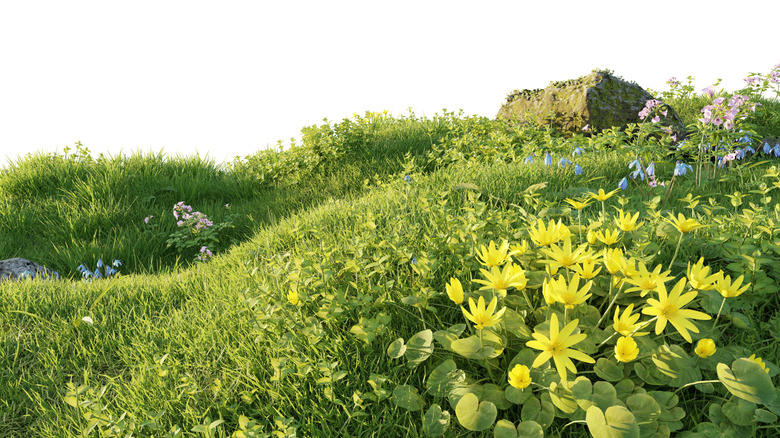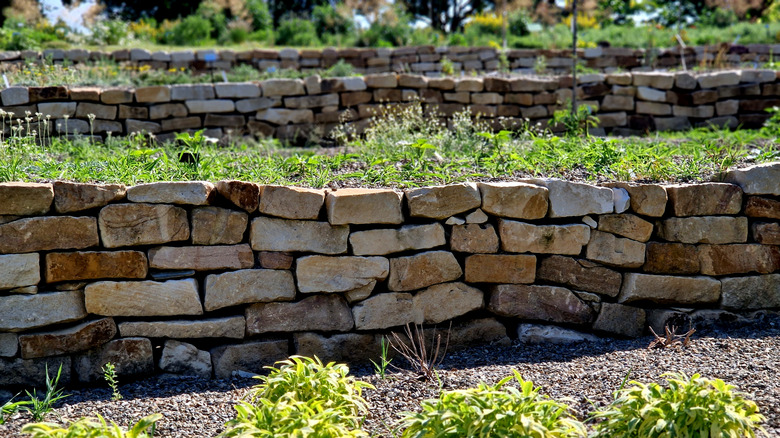The Long-Term Solution For Improving Heavy Clay Soil In Sloped Gardens
It's difficult enough to garden in heavy clay soil, but when that soil is on a slope, you face a double whammy of gardening challenges. Slopes are both hard to mow and hard to water. Worse, slopes are likely to have runoff, erosion, and drainage issues. In heavy clay soil, cultivation is challenging as water is absorbed and drained very slowly. Dry clay soil can even be rock hard. It's very common, especially in the Southeastern United States, and is characterized by its sticky quality and tiny particles. A hard, crusty top layer forms on clay soil when these plate-shaped particles align themselves in layers. These are all reasons gardeners often need methods for improving heavy clay soil.
In the short term, you can improve clay soil by adding organic material, but for a long-term solution that's especially appropriate on slopes, consider terraces or swales — or both. Terracing typically features a series of flat stretches of land connected in stair-step fashion by vertical risers that may also include a retaining wall. Swales are like human-made storm drains, but in a natural setting. They are shallow channels that gardeners can use to direct water down a slope into soil that needs irrigation. A swale can also serve as a drainage solution to keep your grass happy and healthy. Both swales and terraces address the erosion and drainage issues exacerbated by slopes and heavy clay soil, because they slow down water runoff and allow water to gradually soak into the ground. You'll want to consider them if your landscape has both conditions.
How to build a terrace or swale
Turning your slope into a terraced landscape is a big job that you may want to hire a professional landscape architect to execute. If you choose the DIY route, you will likely want to keep the vertical elements under 2 feet high because of the complexities of ensuring the vertical walls can withstand soil and water pressure. The traditional method for building terraces is creating a flat surface by taking out soil that is then used to build lower areas.
Swale construction begins by building a low (2 inches high) berm on both sides of your swale. Choose the location for the swale based on the shape of your land. Because you're building on a slope, you may not have to actually dig the swale, as it will form naturally in the spot where water runs through and pools. Once you've completed your project aimed at dealing with heavy clay soil on your slope, add beautiful plants that will thrive in clay soil on your terraces or along your swale.

